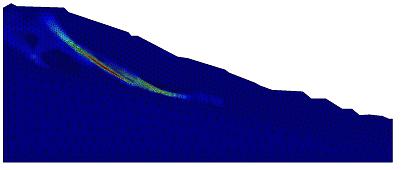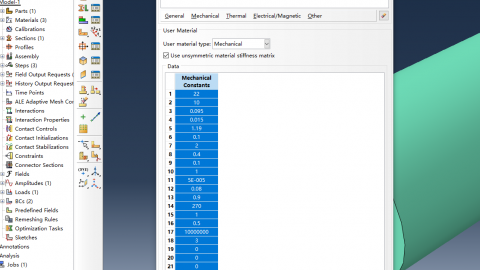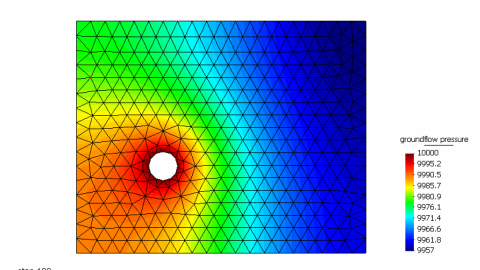Hello, everyone
I am an abaqus user and developer. Recently, I want to simulating the liquefaction phenomenon with abaqus/standard or abaqus/explicit. As I know, this cannot be realized using the internal program because solution of the u-p formulation is not supported. Does that mean I have to write an UEL or VUEL program to solve it ? As the postprocessing of UEL/VUEL is unconvenient, is there other simple way to solve this problem? like using umat or vumat subroutine. Any advice would be greatly appreciated.






Dear Ruibin,
I did not have much experience with this kind of problems, but so far as I know. You have to code your own element formulation u-p or u-p-u.
An example of such an approach can be found in:
J. Machaček, Th. Triantafyllidis and P. Staubach, Fully coupled simulation of an opencast mine subjected to earthquake loading, Soil Dynamics and Earthquake Engineering, 115:853-867, 2018
https://www.sciencedirect.com/science/article/pii/S0267726118304718
Best regards,
Hans Henning
Dear Hans,
Thanks for your reply. It seems uel is necessary to solve this problem. However, the following paper shows a simple method which simulating soil as a two phase material in dynamic analysis. https://onlinelibrary.wiley.com/doi/abs/10.1002/gete.201200018 Unfortunately, I still cannot figure it out at this time.
iam working on same target can you help me
Hello, i am facing today the same problem, I think I found the solution using SaniSand constitutive model by defining the mechanical constant number 17 in abaqus (pore water bulk modulus) that is null in case of drained conditions, liquefaction can not be then modeled explicitly, but liquefied area will be distinguished by the excess pore pressure.
you might be model the process easily also using PLAXIS 3D or 2D, the built-in constitutive models that visualize liquefaction process , like UBCSAND and PS4Sand are very suitable for your purpose.
Dear Ahmed how did you solve your old problem?
sorry it was PM4Sand not PS4Sand
This is what Eng Arie Koot informed about analogy between temperature -and pore pressure in Abaqus, you should define Specific heat and Heat conductivity:
QT=(T1-T2)*A*ktemp/L*dt [J]
ΔT=Q/VRCtemp
Qw= ΔhxAxkw/L*dt = (P1-P2)/9810xAxkw/L*dt [m3]
kw=m/s
ΔP=Qw/VxEwbulk
=> ktemp=conductility=Kw/9810
=> Ctemp=specified heat= 1/Ewbulk/R